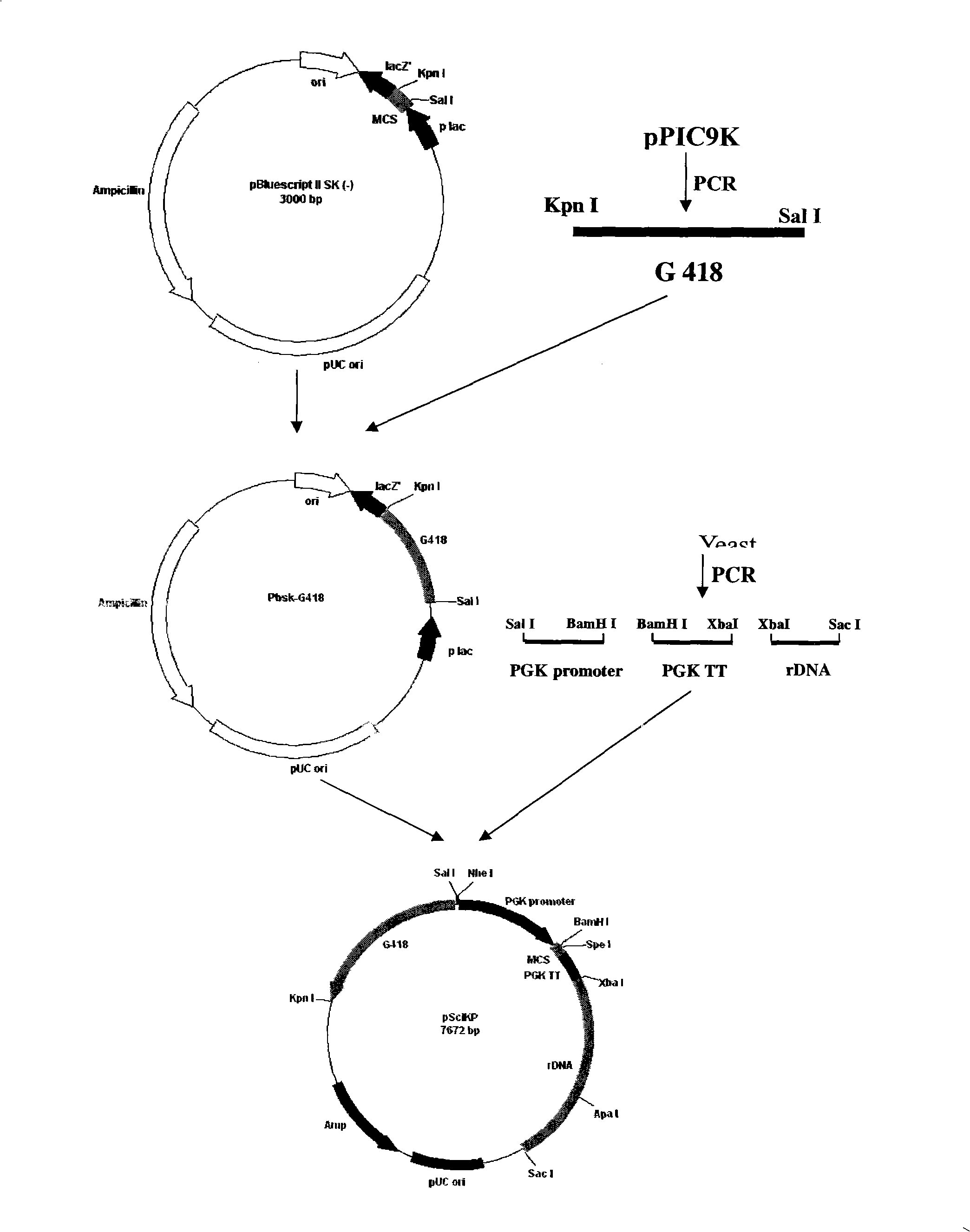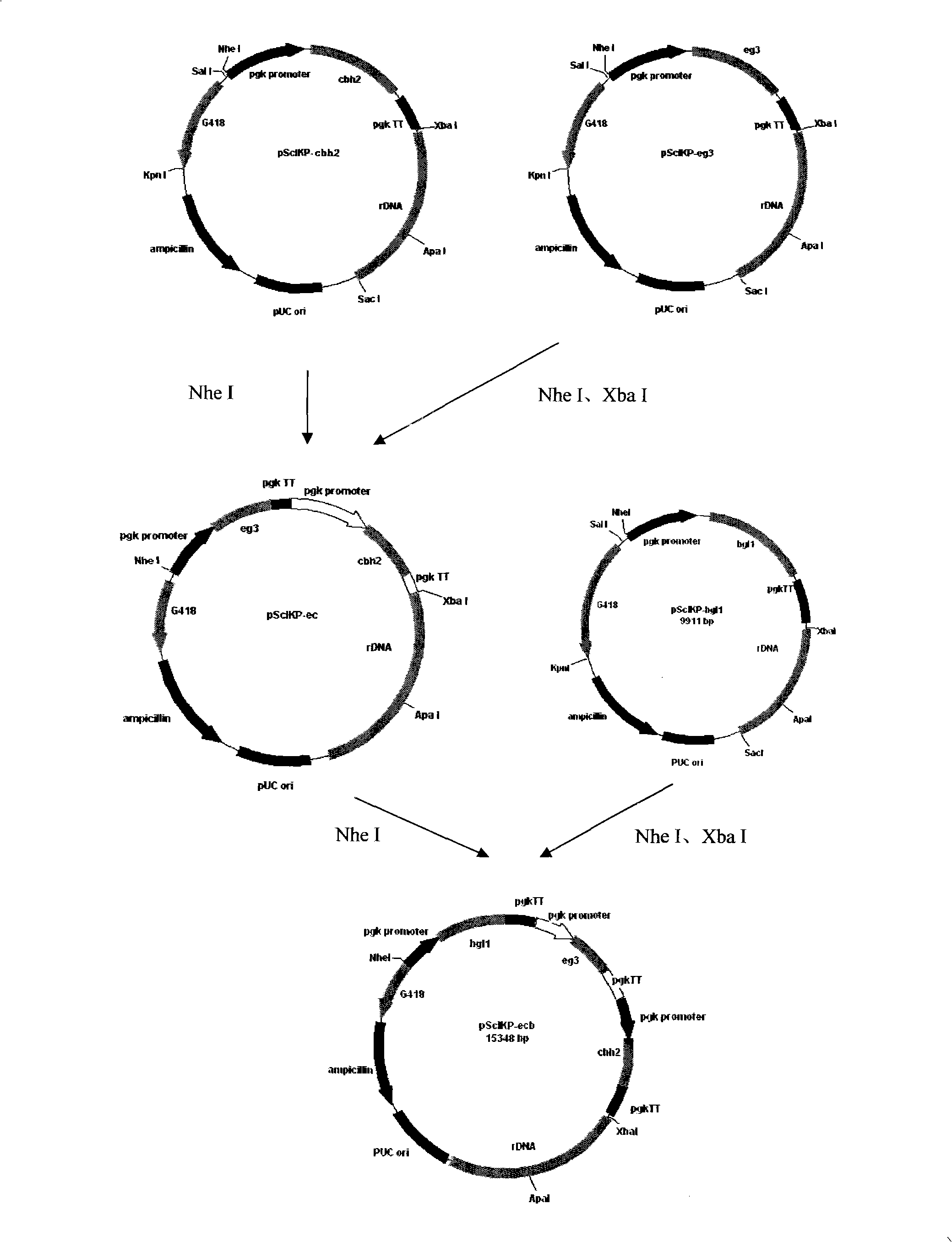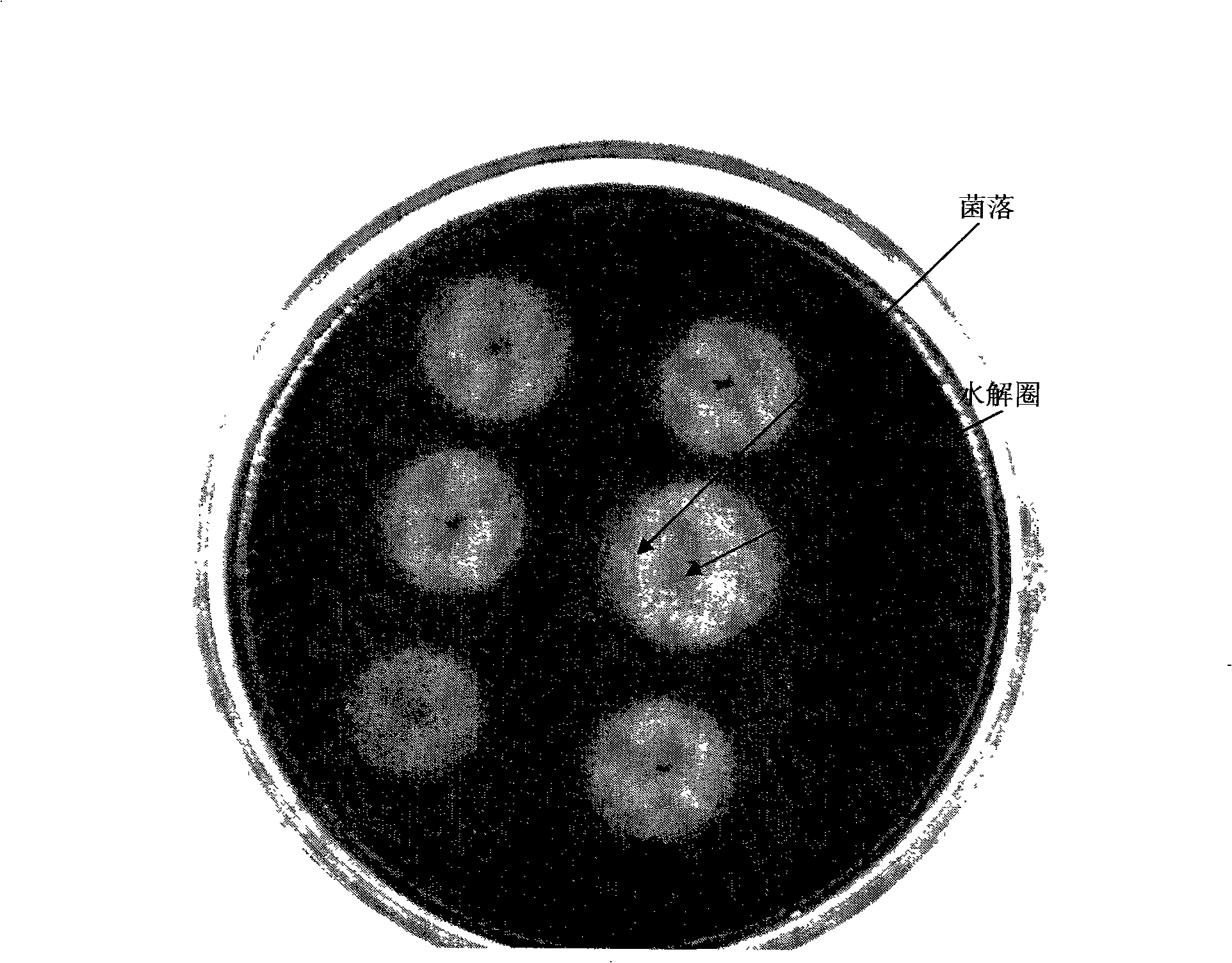Transgenic wine brewing saccharomycete for degradation cellulose synthetic ethyl alcohol and construction method thereof
A Saccharomyces cerevisiae, a technology for degrading cellulose, applied in the field of microbial fermentation, can solve the problems of incomplete destruction of cellulose structure, serious pollution, complicated operation, etc., and achieve the effects of alleviating tail gas pollution, solving pollution, and ensuring energy security
- Summary
- Abstract
- Description
- Claims
- Application Information
AI Technical Summary
Problems solved by technology
Method used
Image
Examples
Embodiment 1
[0050] Example 1 Primer Design of Saccharomyces cerevisiae Multigene Expression Vector and Its Expression Elements
[0051] (1) Specific amplification primers for rDNA
[0052] The rDNA sequence in the Saccharomyces cerevisiae genome is highly repetitive with a length of 9.1kb, and it is the preferred homologous recombination site for constructing a high-copy number integrating vector. In this example, the amplified rDNA fragment of 1.8 kb was selected as the expression element, and at the same time, the position of the fragment in the full-length rDNA sequence of the Saccharomyces cerevisiae genome was clarified.
[0053] With reference to the genome sequence of Saccharomyces cerevisiae (S.cerevisiae) provided by NCBI, the specific primers for amplifying the rDNA 1.8kb fragment were designed using the biological software oligo 6 as follows:
[0054] Upstream primer: 5′-GC TCTAGA CCAGCATCCTTGACTTAC-3';
[0055] ↑
[0056] Xba I
[005...
Embodiment 2
[0081] Embodiment 2 Saccharomyces cerevisiae polygene expression vector and its expression element amplification
[0082] (1) Amplification and purification of rDNA
[0083] Using the genome of Saccharomyces cerevisiae AS2.489 strain (purchased from the Culture Collection Center of the Institute of Microbiology, Chinese Academy of Sciences) as a template, PCR amplification was performed using the rDNA-specific amplification primers obtained in Example 1.
[0084] PCR reaction conditions:
[0085]
[0086] (2) Amplification and purification of PGK promoter
[0087] The first round of PCR amplification used the genome of Saccharomyces cerevisiae AS 2.489 strain as a template.
[0088] PCR reaction conditions:
[0089]
[0090] The second round of PCR amplification uses the purified first round of PCR product as a template for PCR amplification, and the obtained product is the PGK promoter.
[0091]PCR reaction conditions:
[0092]
[0093] (3) Amplification and pur...
Embodiment 3
[0097] Example 3 Construction of Saccharomyces cerevisiae polygene expression vector
[0098] The detailed construction process of Saccharomyces cerevisiae multigene expression vector is as follows: figure 1 As shown, the specific steps are as follows:
[0099] (1) Connect the G418 resistance gene fragment obtained from the pPIC9K vector (purchased from Invitrogen) into the pBluescript II SK (-) vector with T4 ligase to obtain expression vector 1, and perform PCR-specific primer amplification on expression vector 1 Enrichment, enzyme digestion identification and sequencing to ensure the correctness of the sequence.
[0100] (2) Carry out double digestion (SalI and BamH I) to the PCR product of the PGK promoter that embodiment 2 obtains, after the same double digestion is carried out to the expression vector 1 that step (1) obtains simultaneously, with T4 ligase The enzyme-digested product of the PGK promoter was connected into the expression vector 1 to obtain the expression...
PUM
 Login to View More
Login to View More Abstract
Description
Claims
Application Information
 Login to View More
Login to View More - R&D
- Intellectual Property
- Life Sciences
- Materials
- Tech Scout
- Unparalleled Data Quality
- Higher Quality Content
- 60% Fewer Hallucinations
Browse by: Latest US Patents, China's latest patents, Technical Efficacy Thesaurus, Application Domain, Technology Topic, Popular Technical Reports.
© 2025 PatSnap. All rights reserved.Legal|Privacy policy|Modern Slavery Act Transparency Statement|Sitemap|About US| Contact US: help@patsnap.com



